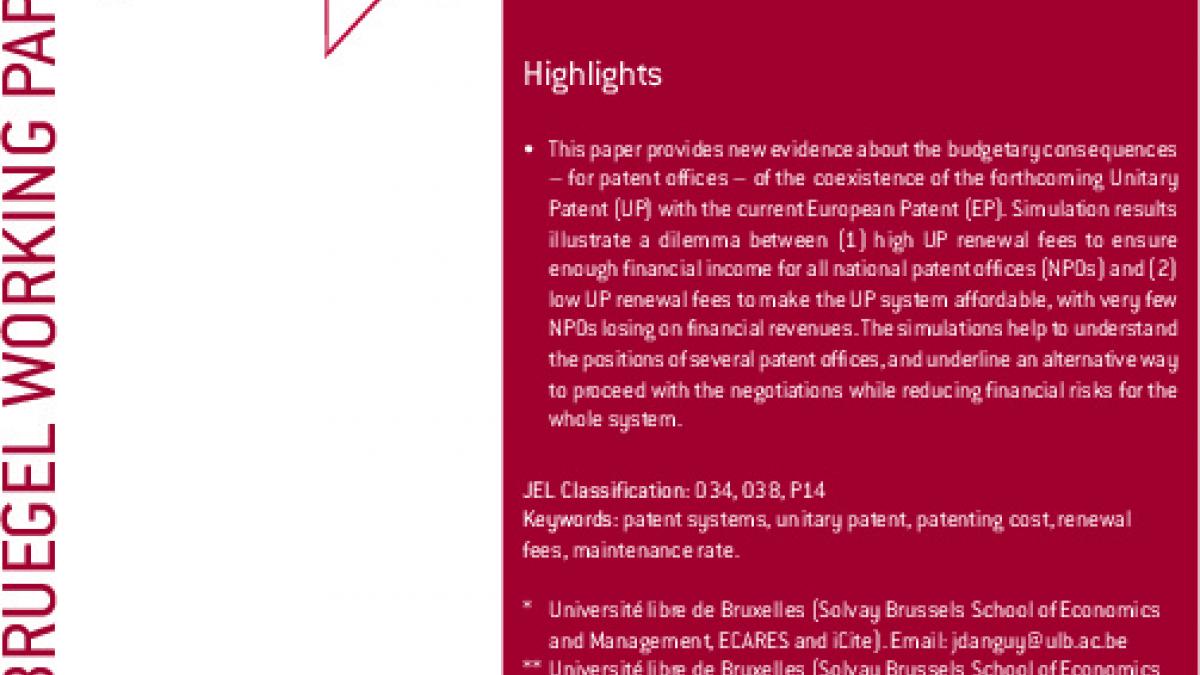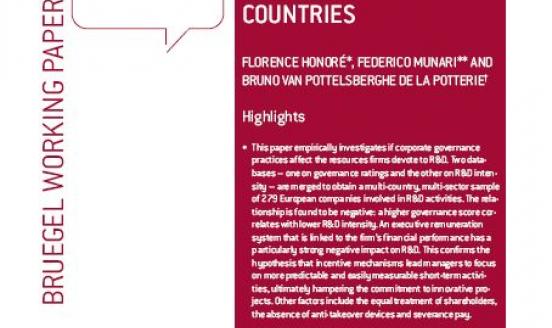The policy dilemma of the unitary patent
This paper provides new evidence about the budgetary consequences – for patent offices – of the coexistence of the forthcoming Unitary Patent (UP) wit

This paper provides new evidence about the budgetary consequences – for patent offices – of the coexistence of the forthcoming Unitary Patent (UP) with the current European Patent (EP). Simulation results illustrate a dilemma between (1) high UP renewal fees to ensure enough financial income for all national patent offices (NPOs) and (2) low UP renewal fees to make the UP system affordable, with very few NPOs losing on financial revenues. The simulations help to understand the positions of several patent offices, and underline an alternative way to proceed with the negotiations while reducing financial risks for the whole system.
